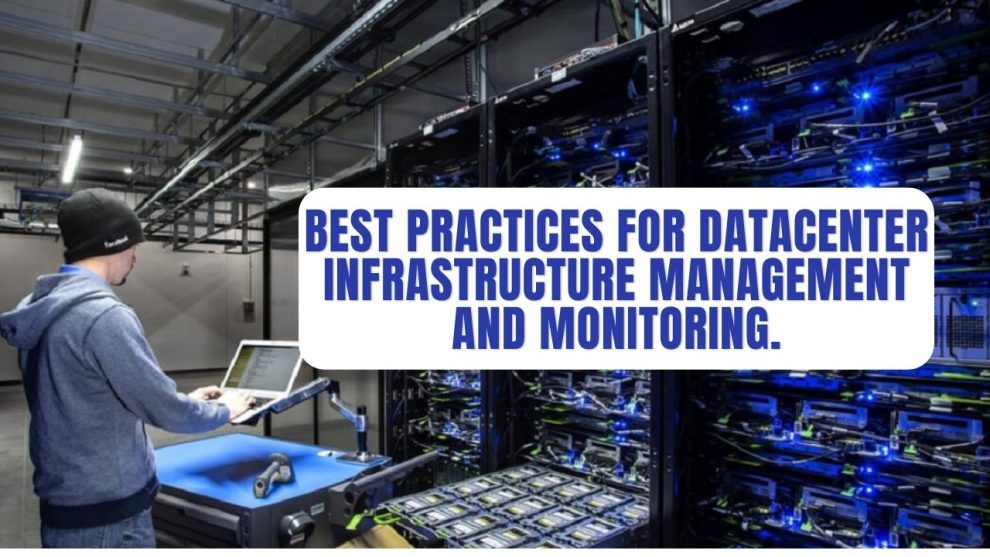
Datacenters are at the heart of modern business operations. They serve as the central hub for critical applications, storage, and networking infrastructure. As such, it’s crucial to implement proper management and monitoring practices to ensure optimal performance and availability of these facilities. In this article, we’ll explore the best practices for datacenter infrastructure management and monitoring, covering everything from physical security to environmental controls and network monitoring.
Introduction
Datacenters are critical to modern business operations, serving as the foundation for IT infrastructure, networking, and storage. However, managing and monitoring these facilities can be complex and challenging, especially as data volumes and computing requirements continue to grow. Effective datacenter management requires a combination of best practices, including physical security, environmental controls, power and cooling management, network monitoring, automation, disaster recovery planning, and performance optimization.
Understanding Datacenter Infrastructure
Before we dive into the best practices, it’s essential to understand the components of a datacenter infrastructure. The key components include servers, storage, networking equipment, and power and cooling systems. All of these components must work together seamlessly to ensure optimal performance, reliability, and availability.
Physical Security Best Practices
Physical security is a critical aspect of datacenter infrastructure management. It involves protecting the facility and equipment from unauthorized access, theft, and other threats. Best practices for physical security include implementing access control systems, surveillance cameras, and security personnel. It’s also important to restrict physical access to sensitive areas, such as server rooms and network closets.
Environmental Controls
Datacenters generate significant amounts of heat, which can damage equipment and lead to downtime. Environmental controls, such as air conditioning and humidity control, are crucial for maintaining a stable operating environment. Best practices for environmental controls include installing redundant cooling systems, monitoring temperature and humidity levels, and implementing fire suppression systems.
Power and Cooling Management
Power and cooling management is essential for maintaining uptime and reducing energy costs. Best practices for power and cooling management include implementing a redundant power supply, monitoring power usage, and optimizing cooling systems. It’s also important to ensure that backup generators are in place in case of a power outage.
Network Monitoring and Management
Effective network monitoring and management are critical for maintaining optimal performance and availability. Best practices for network monitoring include using network monitoring tools to track performance metrics, implementing redundant network connections, and optimizing network bandwidth. It’s also important to ensure that network security protocols are in place to protect against cyber threats.
Automation and Orchestration
Automation and orchestration can help streamline datacenter management by automating routine tasks and reducing the risk of errors. Best practices for automation and orchestration include implementing configuration management tools, automating backup and recovery processes, and using orchestration tools to manage virtualized environments.
Disaster Recovery Planning
Disaster recovery planning is essential for ensuring business continuity in the event of a disaster. Best practices for disaster recovery planning include implementing a comprehensive backup strategy, testing backups regularly, and developing a disaster recovery plan that includes clear procedures for restoring critical systems.
Scalability and Future-Proofing
As data volumes and computing requirements continue to grow, datacenters must be scalable and future-proofed to meet evolving needs. Best practices for scalability and future-proofing include implementing modular designs, using cloud-based services where appropriate, and planning for future growth by leaving room for expansion.
Performance Monitoring and Optimization
Effective performance monitoring and optimization are essential for maintaining optimal datacenter performance. Best practices for performance monitoring include tracking key performance metrics, implementing performance optimization tools, and identifying and resolving performance bottlenecks.
Datacenter Metrics and Reporting
Datacenter metrics and reporting are essential for tracking performance, identifying trends, and making informed decisions about datacenter management. Best practices for datacenter metrics and reporting include tracking key performance indicators, using analytics tools to generate reports, and presenting data in a clear and understandable format.
Staff Training and Management
Datacenter staff must be properly trained and managed to ensure effective datacenter management. Best practices for staff training and management include implementing a comprehensive training program, providing ongoing education and support, and creating a positive and collaborative work environment.
Vendor Management
Many datacenters rely on third-party vendors for equipment, software, and services. Effective vendor management is crucial for ensuring that these vendors meet performance, security, and compliance requirements. Best practices for vendor management include establishing clear service level agreements, monitoring vendor performance, and maintaining open communication channels.
Compliance and Regulatory Requirements
Datacenters must comply with a range of regulatory requirements, including data privacy, security, and environmental regulations. Best practices for compliance and regulatory requirements include staying up to date on relevant regulations, implementing appropriate security controls, and maintaining comprehensive documentation and audit trails.
Conclusion
Effective datacenter infrastructure management and monitoring are essential for ensuring optimal performance, reliability, and availability. By implementing best practices for physical security, environmental controls, power and cooling management, network monitoring, automation, disaster recovery planning, scalability, performance monitoring, datacenter metrics, staff training and management, vendor management, and compliance, organizations can ensure that their datacenters meet the demands of modern business operations.